On September 30, local time in the United States, Tesla held the 2022 AI Day event in Palo Alto, California. Tesla CEO Elon Musk and the team of Tesla engineers appeared at the venue and brought the world premiere of the Tesla Bot humanoid robot “Optimus” prototype, which uses the same artificial intelligence technology as Tesla cars. Humanoid robots will lead us into the long-awaited “next generation”.
From the first industrial revolution to the present, human life has undergone tremendous changes. We go from riding a carriage to driving a car, from kerosene lamps to electric lights, from reading a vast sea of books to easily obtaining various information through the Internet… Every scientific and technological progress has led mankind into a new era, and people are curious when the era of artificial intelligence will come. .
In fact, looking back on the past, we can find that facial recognition technology, voice and text conversion, content recommendation mechanisms, and sweeping robots have already subtly affected our lives. In fact, human beings have long been in the era of artificial intelligence.
The reason why people have not entered the perception of the new era is because people have expectations for artificial intelligence. In addition to the requirements for application methods, they also hope to see “human figures” rather than machines in terms of form, which can be more integrated into human life scenes. . Humanoid robots have greater significance in terms of technology, economy, society and human spirit.
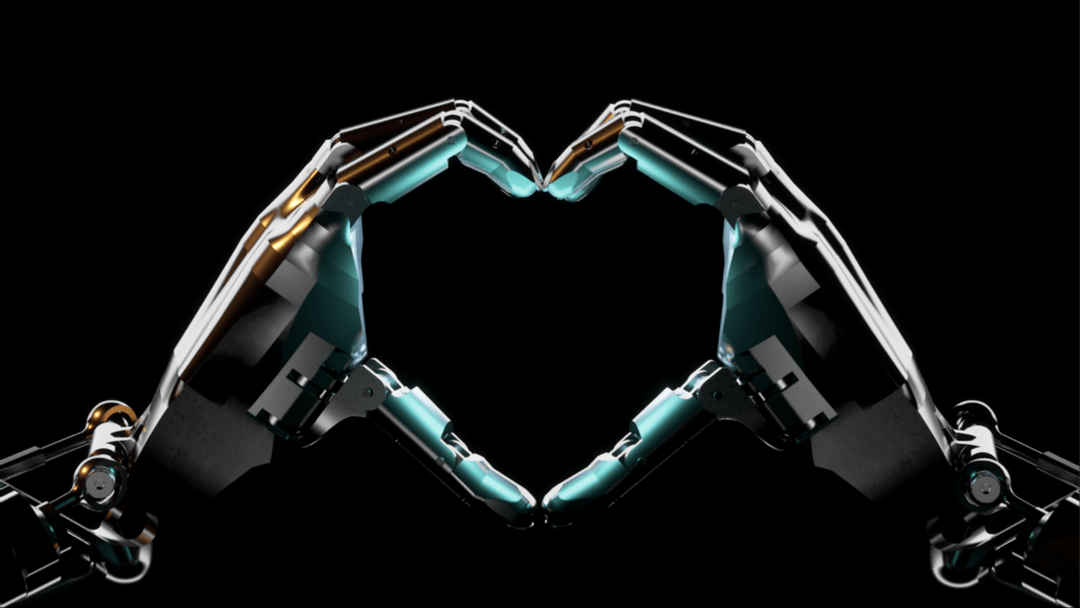
Using Tesla’s homologous artificial intelligence technology to create a real humanoid robot
In fact, before Tesla, many manufacturers have released humanoid robot products, but only Tesla has brought a stronger “sense of reality”.
Because Tesla CEO Elon Musk said: “We need to mass-produce robots with very high reliability and very low cost, which is very important.” He predicts that Optimus may be mass-produced in 3-5 years. When it hits the market, the output should reach millions, and its price will be much cheaper than a car, with the final price of the robot expected to be under $20,000.
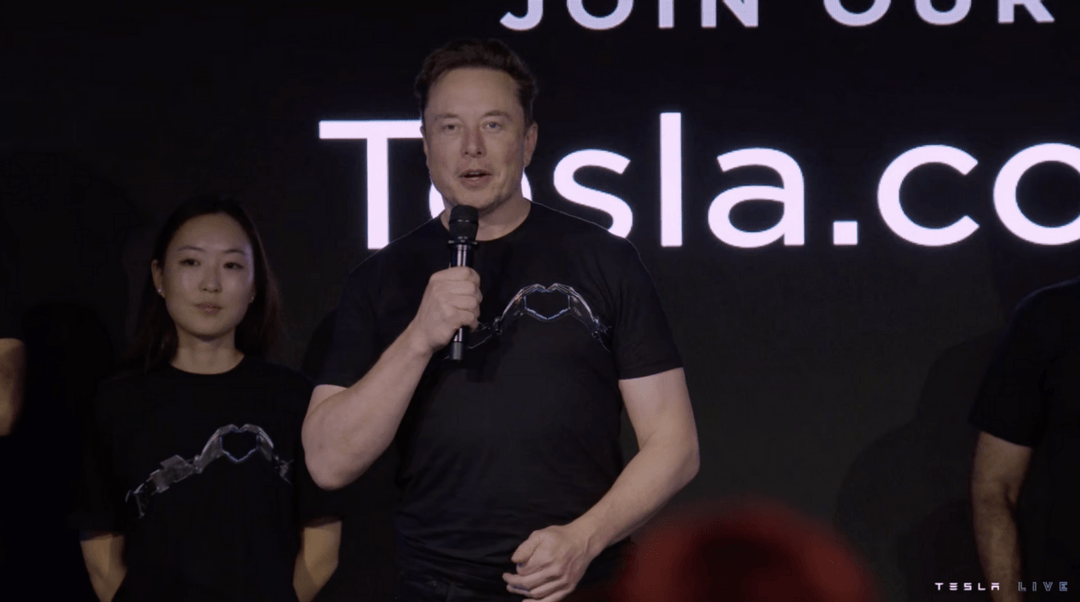
At present, the robots manufactured by most manufacturers are either too expensive to be mass-produced, or aborted due to the bottomless investment. For example, the humanoid robot recently released by domestic manufacturers costs 700,000 yuan and cannot be mass-produced, while the cost of ASIMO in Japan is even higher. It is as high as more than 20 million yuan.
Many of the technologies applied by Optimus are common to Tesla vehicles, such as scene construction, visual recognition, etc., and the same neural network learning technology is used as Tesla FSD (Full Self-Driving Capability). Tesla’s accumulation of artificial intelligence not only allows Tesla vehicles to have more technical potential than other brand products, but also allows Optimus to go from concept to reality in just a few months. This AI Day, Tesla not only brought the prototype of Optimus, but also showed the version that will be put into production. This means that in a few years, ordinary people like you and me have their own humanoid robots no longer exist in the imagination, it is not an expensive toy, but a real partner that can serve us.
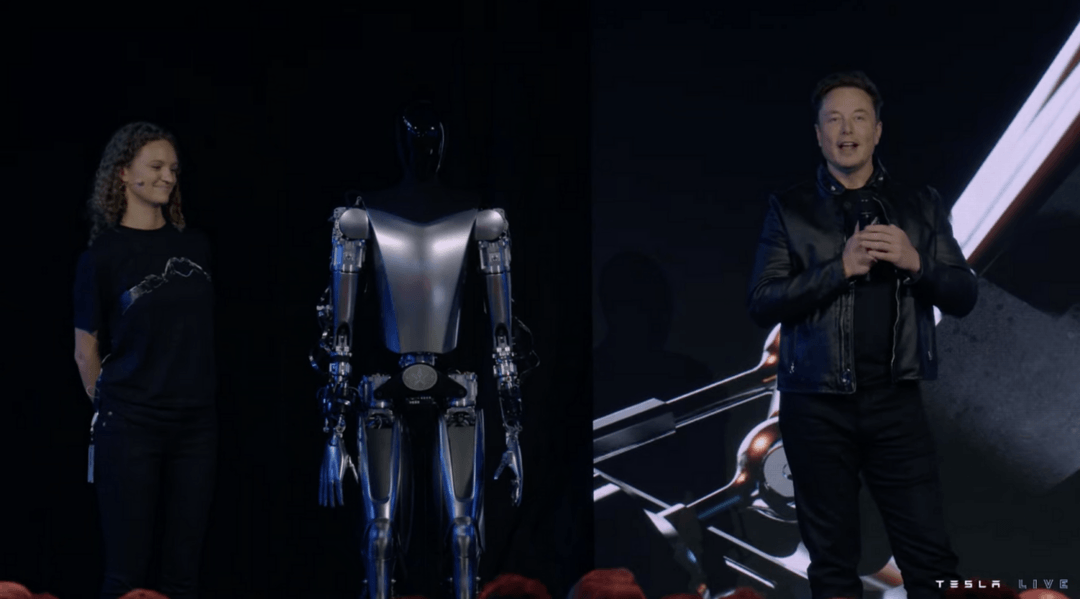
Today, the Optimus prototype can flexibly lift the kettle to water the flowers in the office, carry materials to the target position with both hands, accurately locate the surrounding people and actively avoid them. According to media reports, Optimus has begun to put simple work in Tesla’s Fremont factory.
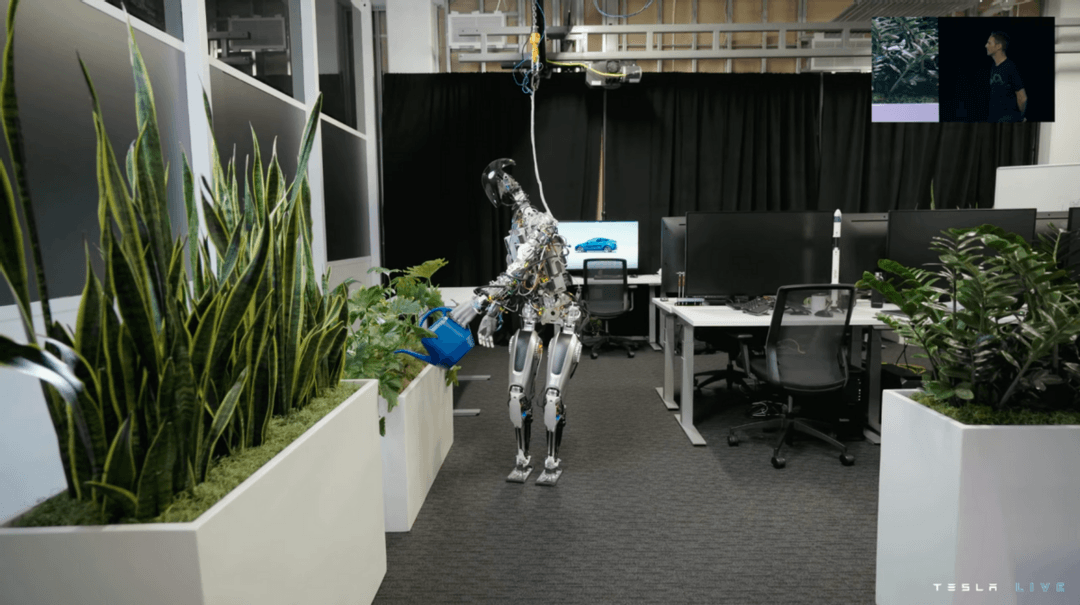
Human form will give robots more possibilities. Smart cars have made artificial intelligence technology widely used, and once humanoid robots enter the market in large quantities like smart cars today, artificial intelligence will truly face the scenes faced by humans, such as cleaning, cooking, learning, leisure, parenting, and retirement. … a wider world is unfolding in the AI industry.
“The essence of AGI (Artificial General Intelligence) is emergence,” Musk said. A dramatic increase in the number of individuals in a system can cause groups to suddenly appear characteristics that were not there before. This phenomenon is called emergence. Life and intelligence are the result of emergence. The signals conveyed by a single neuron are extremely limited and cannot even be interpreted, but the superposition of tens of billions of neurons forms human “intelligence”. Artificial intelligence is developing at an exponential speed. After a certain “singularity”, perhaps intelligence close to human can “emerge”. At that time, artificial intelligence will usher in its own “complete body”.
Cognize the world from a human perspective and go deeper into more scenarios
To make Optimus closer to humans, Tesla has made a lot of efforts over the past year, combining hardware and software technologies previously used in cars with robots. The robot’s torso is equipped with a 2.3 kWh, 52V battery pack, which is highly integrated with charge management, sensors and cooling systems, which can support the robot to work all day. “This means that everything from sensing to fusion to charging management is brought together into this system, which also draws on our experience in car design.” The Tesla engineer said.
The Optimus body has a total of 28 structural actuators, the joints are designed with bionic joints, and the hands are designed with 11 degrees of freedom. In terms of “sensation”, Tesla’s powerful computer vision can be directly applied to robots after being verified by the actual application of the fully autonomous driving capability (FSD) system. Optimus’ “brain” uses the same chip as Tesla’s vehicles and supports Wi-Fi, LTE links and audio communication, allowing it to process visual data, make action decisions based on multiple sensor inputs, and support systems such as communication and communication. The security of software and hardware has also been improved again.
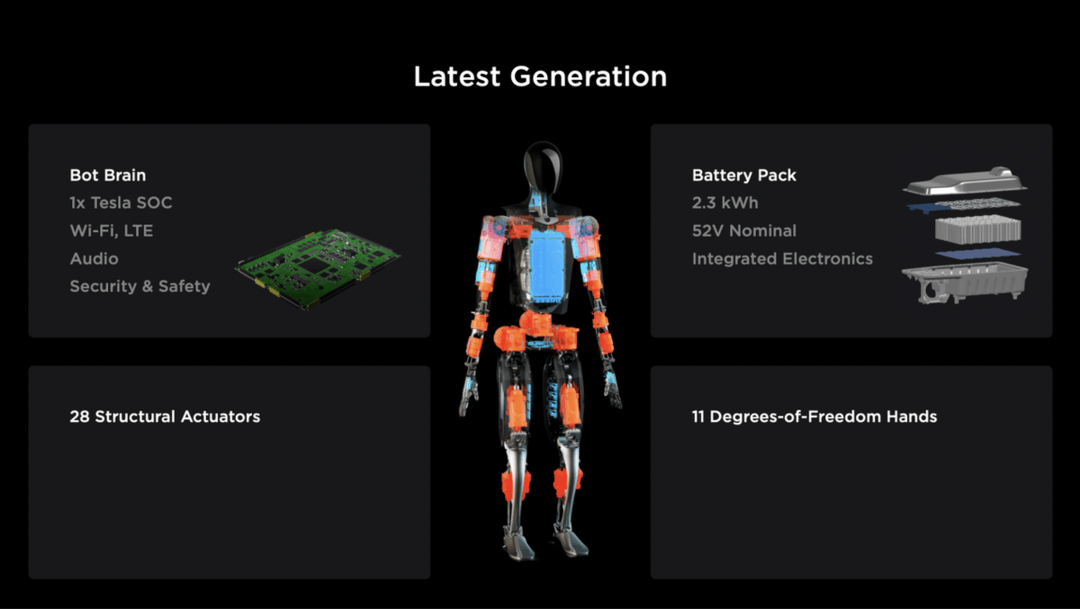
At the same time, Optimus also “learns” humans through motion capture, and the form of interaction with the world is more human-like. Taking the handling of items as an example, Tesla staff input actions through wearable devices, and the robot learns through neural networks, from completing the same actions in the same place, to evolving solutions in other scenarios, so as to learn to operate in different environments. Carry different items.

At present, Optimus can complete actions such as walking, climbing stairs, squatting, and picking up objects. There are not only actuators that can withstand heavy objects such as pianos weighing about half a ton, but also light objects that can grasp, operate mechanical devices, complex Flexible hands for high-precision movements such as gestures.
Musk said that what Tesla wants to do is “useful” products: “We hope to help more people and improve work efficiency through products like Optimus. Over time, we will consider how to change our future. product.”
Focus on AI security and take the lead in setting standards for the industry
Like cars, in terms of robots, Tesla also adheres to the concept of “design with safety first”, and improves the safety of robots based on the ability of automotive safety simulation analysis. In traffic accident simulation, Tesla improves safety performance through software optimization and improvement of vehicle collapse, battery protection, etc., and in robot design, Tesla also guarantees Optimus’s ability to protect itself and the people around it in the same way. For example, in external situations such as falls and collisions, the robot will take decisions that are consistent with human beings – the greatest priority is to ensure the safety of the “brain”, followed by the safety of the torso battery pack.
In the Q&A session of AI Day, Musk also pointed out the safety issues of artificial intelligence. “AI security is very critical,” he said. “AI security should have better regulation at the government level, and a corresponding regulatory agency should be established. Anything that may affect public safety needs such regulation.”
Just as areas such as cars, airplanes, food, and drugs that “affect public safety” already have relatively well-regulated methods, Musk believes that artificial intelligence needs similar measures: “We need a kind of referee role to ensure that AI is relevant to the public. It’s safe.”
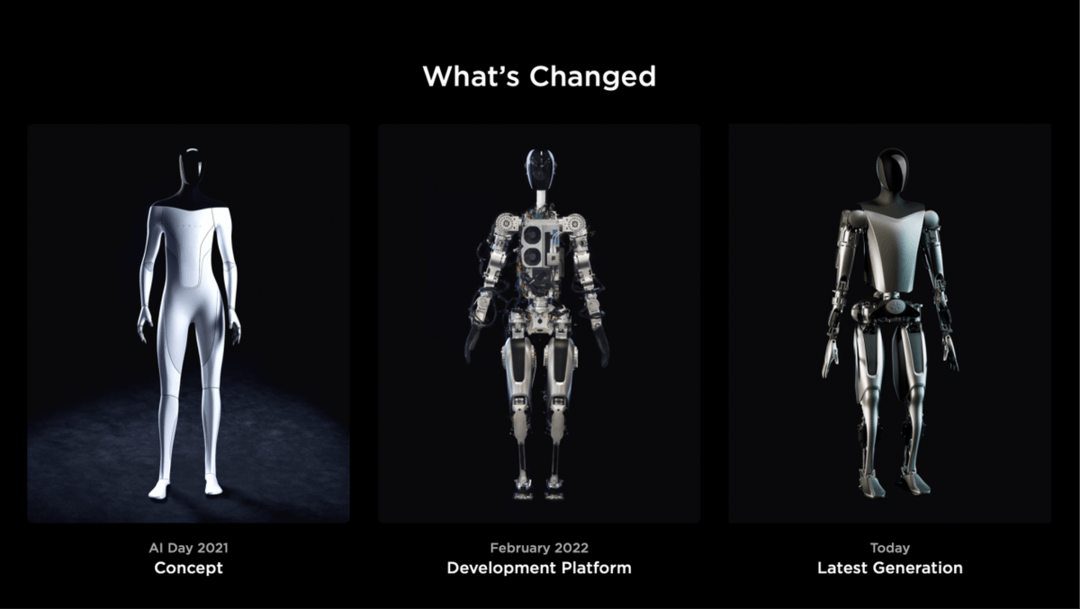
There is currently no unified guideline for AI safety, and the mass production of Optimus will prompt the industry and various departments and agencies to accelerate the formulation of standards, and take the lead in providing a model for reference.
Create “the world’s strongest supercomputer” and lead the development of the industry
In order to achieve safe and reliable autonomous driving , smart cars require unimaginably large training data. Humanoid robots that deal with more complex scenarios require stronger training computing power and larger-scale data training and analysis. How to Solving for faster processing of this data determines the speed at which artificial intelligence develops.
Tesla’s self-developed Dojo supercomputer will be up to the task. Tesla has realized the importance of high computing power and high efficiency chips from the beginning. Tesla engineers said: “We want to make the Dojo supercomputer the world’s strongest supercomputing system in artificial intelligence training.”
At present, Tesla has achieved a 30% increase in training speed only in terms of code and design. For example, through automatic labeling technology, Tesla has greatly improved the labeling speed of training scenes. Using only one training module consisting of 25 D1 chips, the performance of 6 GPU Boxes can be achieved, and the cost is lower than one GPU Box. Only the computing power of 4 Dojo supercomputer cabinets is required to achieve the automatic labeling performance of 72 GPU cabinets.
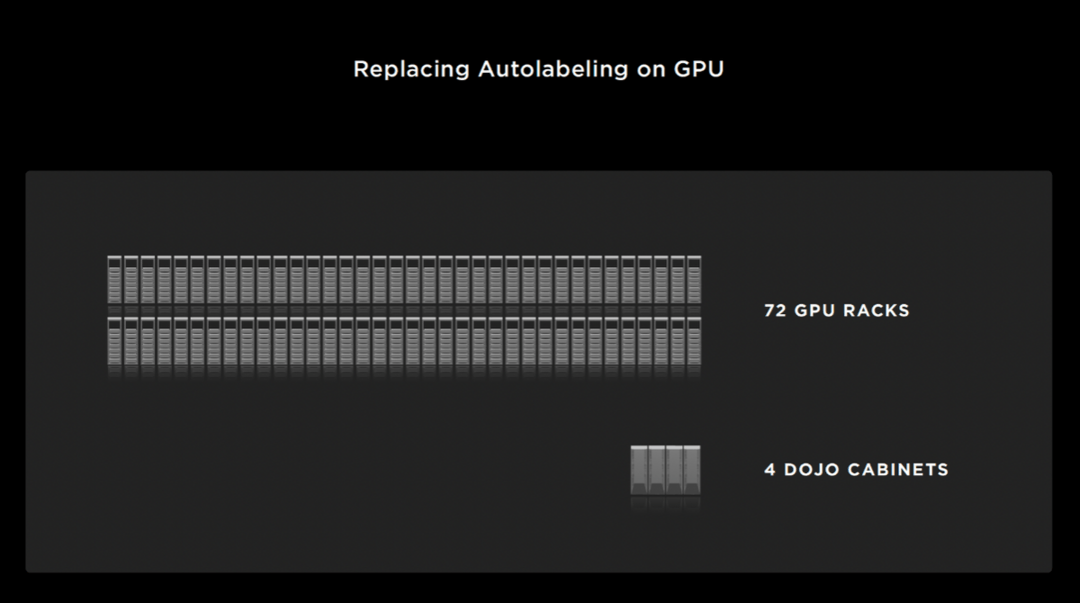
Under the efficient neural network training, the first benefit is the development of Tesla FSD, whose software has gradually matured at the technical level. In the latest version of the update, the FSD has become more and more human-like like a humanoid robot, handling driving situations in a way that more closely resembles human responses.
For example, in the scene of unprotected left turn, if there is a vehicle on the opposite side of the intersection turning right, a vehicle on the right side of the intersection goes straight, and there is a person walking with a dog on the zebra crossing on the left, the FSD system will provide various solutions: Accelerate to the left before pedestrians and vehicles. Turn into the road; wait for pedestrians and right-turning vehicles to pass, then turn left before vehicles on the right pass the intersection; or wait for pedestrians and vehicles on both sides to pass before turning left. In the past, FSD may have adopted the more radical first way, but now it will choose the second way, which is more gentle and natural, and fits the thinking of most human drivers. This is also a manifestation of artificial intelligence security.
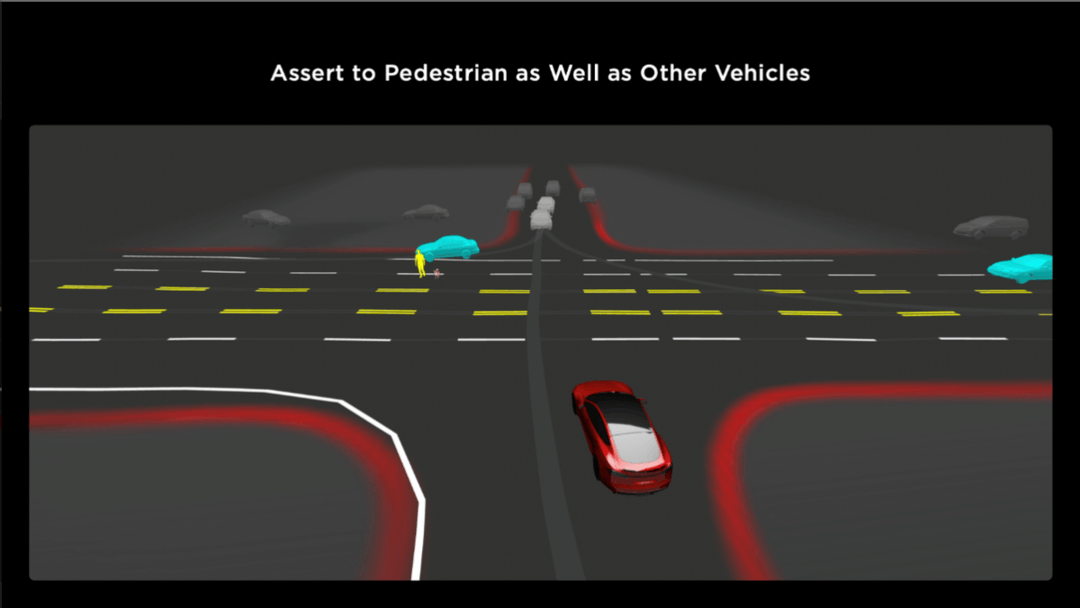
Tesla said that it will deploy the first batch of 10 Dojo supercomputer cabinets in the first quarter of 2023, that is, ExaPOD with a computing power of more than 1.1EFLOPS, which will increase the automatic labeling ability by 2.5 times; Fig. 7 arranges such clusters to provide unimaginably huge computing power, accelerate the development of autonomous driving and humanoid robots, and lead the development of the industry.
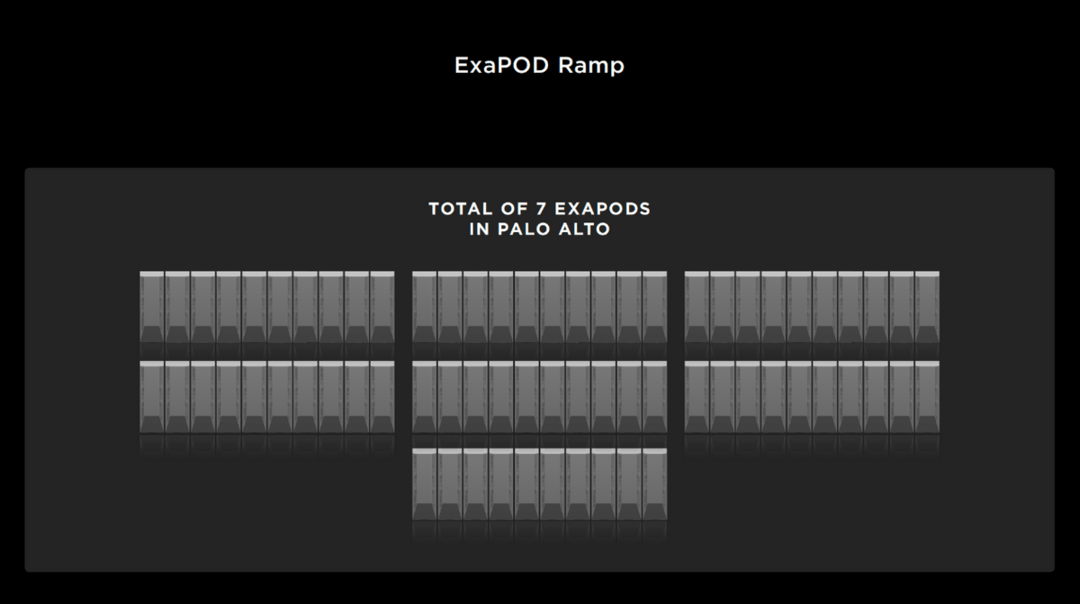
Liberate the labor force and change the destiny of mankind
The changes brought about by autonomous driving in the transportation industry can be described as revolutionary, and the efficiency of transportation production can be improved by at least an order of magnitude or more. Robots will have greater significance for society and will change the fate of mankind.
Musk said: “When you talk about robots, you think of economic development. The fundamental element of the economy is labor, and if we can use robots to achieve lower labor costs, it will eventually lead to faster economic development.”
The fourth industrial revolution represented by artificial intelligence is in full swing. As the most ideal hardware platform for artificial intelligence, humanoid robots will release a large proportion of the labor force of the tertiary industry while accelerating the liberation of the labor force of the primary and secondary industries. The labor shortage caused by low birth rate and aging will be solved.
Not only that, in the future, with the participation of robots, people will be able to freely choose jobs, among which simple repetitive tasks can be done by robots, which will become a choice for humans, not a necessity. More people can enter the more valuable fields of human beings – creation, research and development, charity, people’s livelihood… Let human beings move towards a higher level of technology and spiritual civilization.
With the blessing of the Dojo supercomputer, Tesla will develop rapidly in the field of artificial intelligence and humanoid robots. At present, the closest artificial intelligence technology to us is FSD, which has already landed on Tesla cars. Compared with the Tesla car that uses homologous artificial intelligence technology and has already entered life, Optimus, the “closest to mass production” humanoid robot, still needs a few years to really meet us, because Tesla Pull takes a very careful approach and guarantees to bring reliable and safe products.
Musk said: “I hope that we can be very careful to let Optimus benefit mankind and bring what we need to our civilization, humanity, and I believe this is very clear and very important.” In the future, human beings may no longer have to rush for survival, but devote themselves to the things they truly love.
At that time, what we will remember is the art that touches the soul, the technology that promotes social progress, and the good deeds that show the sparkle of humanity, rather than environmental pollution, waste of resources, competition for interests, war, poverty… A better new world may finally come. .
Post time: Oct-03-2022